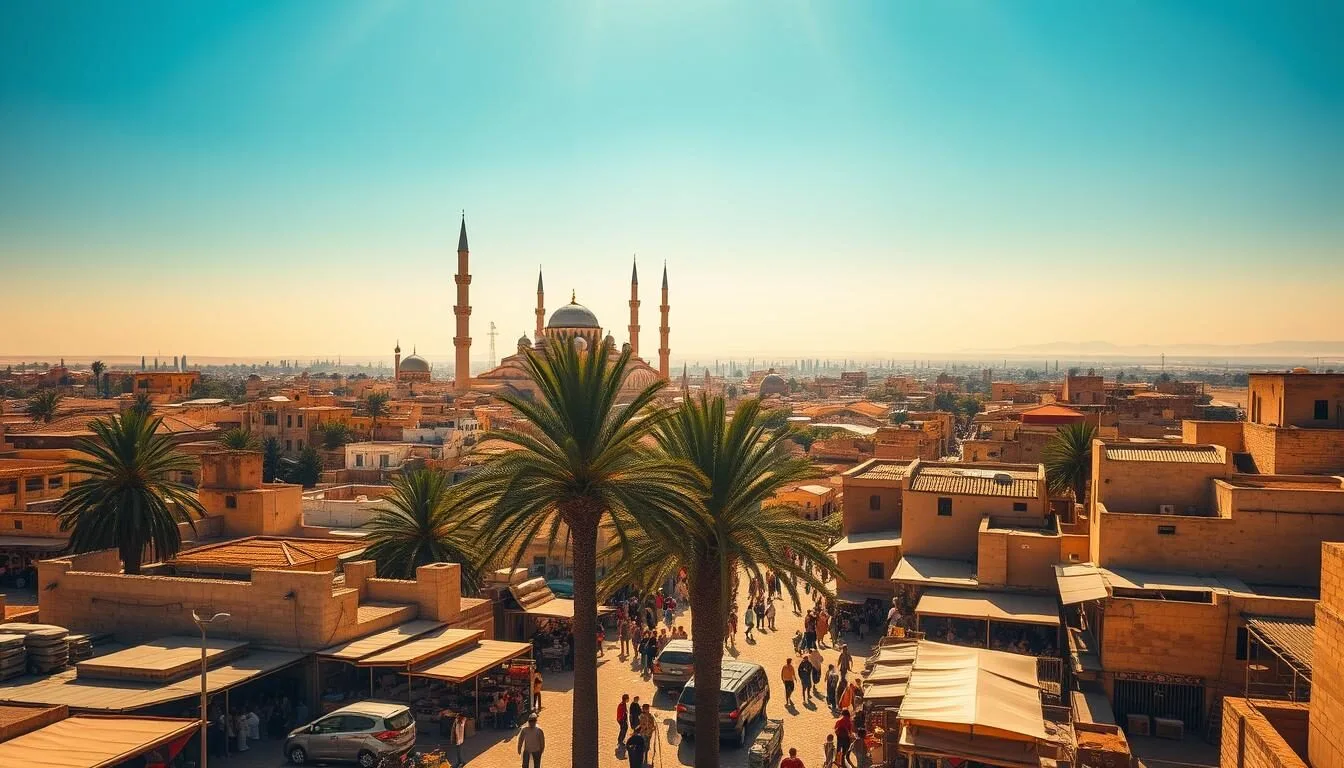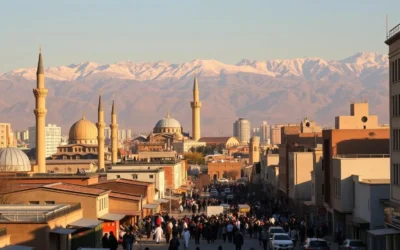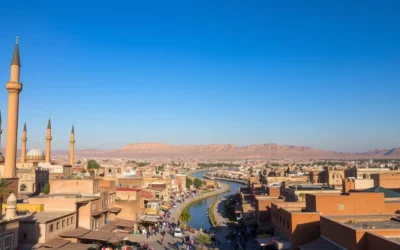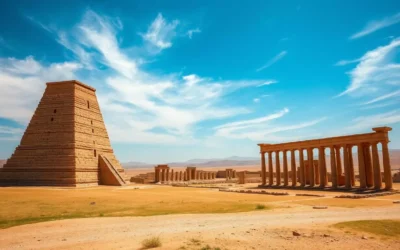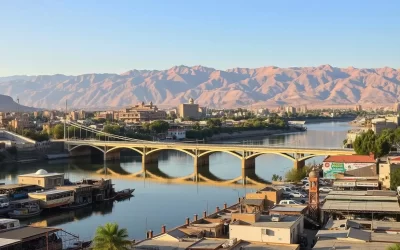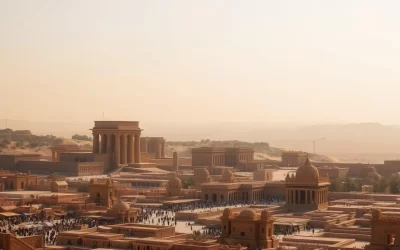✓ Accommodations✓ Flights✓ Rental Cars
Tucked away in southeastern Iraq, Amara is a city that promises an unforgettable experience for travelers. As you explore this enchanting city, you’ll uncover the rich heritage and warm hospitality of the Iraqi people.
Amara is a city steeped in history and culture, offering a unique blend of traditional and modern attractions. From the breathtaking Mesopotamian Marshes to the historic architecture, there’s something for every kind of traveler.
Discovering Amara: Iraq’s Hidden Gem
With its unique blend of Iraqi and Persian influences, Amara is a region that offers a distinct cultural experience. As you delve into this mid-sized Iraqi city, you’ll uncover a rich tapestry of history, culture, and natural beauty.
Historical Background and Significance
Amara’s history is deeply intertwined with its strategic location along the Tigris River. This place has been a significant cultural and economic hub for centuries, with its proximity to the Iranian border influencing its cultural makeup. The city’s historical significance is evident in its architecture, local cuisine, and customs, which reflect a blend of Iraqi and Persian traditions.
Geographic Location and Modern Importance
Situated approximately 365 kilometers southeast of Baghdad, Amara enjoys a prime location that has shaped its economy and culture. As the capital of Maysan Governorate, it serves as an important administrative and commercial center for the surrounding agricultural area. The city’s diverse landscapes, ranging from the lush riverbanks of the Tigris to the expansive Mesopotamian Marshes, give Amara a varied natural environment. Today, Amara is a thriving city with a population of approximately 400,000 people, offering a mix of urban amenities and a relaxed pace of life.
Amara’s strategic location has made it an important stopping point for travelers exploring southern Iraq. The city’s unique cultural blend, rich history, and natural beauty make it a compelling destination for those looking to experience the authentic essence of Iraq.
Exploring the Mesopotamian Marshes
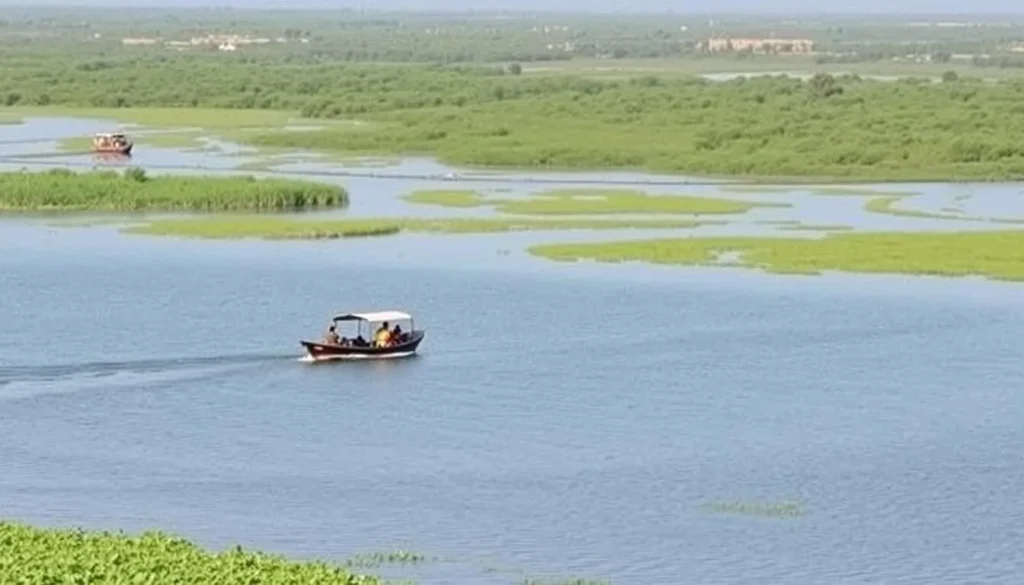
As you venture into the Mesopotamian Marshes, you’ll uncover a world that’s been hidden for centuries. The Mesopotamian Marshes, a vast wetland in southern Iraq, is a unique ecosystem that has been home to the Marsh Arabs for over 5,000 years.
Traditional Boat Tours Through the Marshlands
Explore the intricate network of waterways and canals on a traditional boat tour through the marshlands. You’ll glide through the calm waters, surrounded by towering reeds and lush vegetation, and witness the rich biodiversity of this ecosystem. The Marsh Arabs, known locally as Ma’dan, will be your guides, sharing their knowledge of the marshes and its inhabitants.
The boat tours offer a serene and peaceful experience, allowing you to connect with nature and appreciate the beauty of this ancient landscape. As you navigate the marshes, you’ll see a variety of bird species, including herons, egrets, and kingfishers, and maybe even spot a rare otter or water buffalo.
Meeting the Marsh Arabs and Their Unique Way of Life
Visiting the floating villages of the Marsh Arabs offers a rare glimpse into a way of life that has remained largely unchanged for centuries. You’ll see homes, schools, and even small mosques built on artificial islands made from reeds and mud. Many Marsh Arab families welcome visitors into their homes, offering traditional hospitality with sweet tea and freshly caught fish prepared according to time-honored recipes.
You’ll witness traditional crafts being practiced, including reed weaving, boat building, and fishing techniques that have been passed down through generations. The Marsh Arabs have developed a unique culture perfectly adapted to life on the water, and their resilience and adaptability are a testament to their strong community and rich heritage.
Visiting the Shatt al-Arab Waterfront
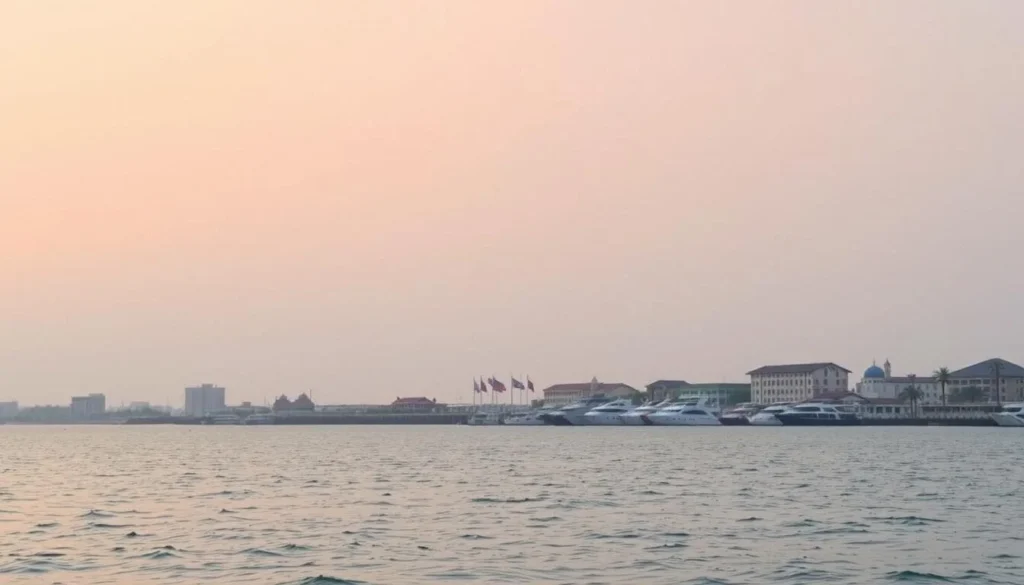
The Shatt al-Arab waterfront is a must-visit destination when in Amara, offering a blend of natural beauty and cultural richness. As you visit, you’ll have the opportunity to engage with local fishermen and witness traditional fishing practices that have been a cornerstone of the community for generations.
Scenic River Walks and Sunset Views
Strolling along the Shatt al-Arab waterfront, you’ll be treated to scenic river walks and breathtaking sunset views. The tranquil atmosphere makes for a perfect evening outing, with the river’s gentle flow and the warm glow of the setting sun creating a serene ambiance. It’s a great way to unwind and appreciate the natural beauty of the area.
Traditional Fishing Demonstrations
One of the highlights of visiting the Shatt al-Arab waterfront is observing traditional fishing demonstrations. Local fishermen use time-honored techniques, including large cone-shaped nets called “saliya,” to catch a variety of fish species such as carp, barbus, and catfish. The best time to witness these demonstrations is early morning, around 6-7 am, when fishermen head out to secure the day’s catch. You’ll see how they skillfully navigate the river and learn about the local people‘s reliance on fishing as a livelihood.
Some fishermen are more than happy to share their knowledge with visitors, explaining the intricacies of their craft and how they select specific spots along the river based on their understanding of fish movements and water conditions. You might even have the chance to arrange a short boat trip with local fishermen, providing an immersive experience into this traditional way of life.
Amara’s Historical Sites and Architecture
Amara, a city with a rich history, boasts an array of historical sites and architectural marvels that reflect its cultural and geographical significance. The city’s landscape is dotted with remnants of ancient civilizations and influences from various periods, making it a fascinating destination for history buffs and travelers alike.
Ancient Mesopotamian Ruins Near Amara
The region around Amara is home to numerous ancient Mesopotamian ruins, testifying to the area’s historical importance. These sites provide a glimpse into the lives of the people who once inhabited this region, showcasing the advanced civilizations that flourished here.
Visitors can explore these ancient ruins, which include remnants of temples, palaces, and other structures significant to the Mesopotamian civilization. The ruins offer a unique opportunity to understand the cultural, social, and religious practices of the time.
Ottoman-Era Buildings and Influences
The city of Amara is also marked by the influence of the Ottoman era, evident in its architecture and historical buildings. The Old Serail, with its arched entrances and decorative brickwork, is a standout example of Ottoman architectural style. Additionally, traditional Ottoman houses, characterized by their wooden balconies (shanasheel) and ingenious cooling systems, are a common sight in the city’s older neighborhoods.
These structures not only reflect the Ottoman legacy in Amara but also contribute to the city’s unique cultural and historical identity. Visitors can walk through the historic areas to appreciate the beauty and significance of these buildings.
Exploring Local Mosques and Religious Sites
As you explore Amara, you’ll discover a rich tapestry of religious sites that reflect the city’s deep spiritual heritage. The city’s mosques and religious buildings are not only places of worship but also serve as cultural and historical landmarks.
Imam Ali Mosque Remnants
The remnants of the Imam Ali Mosque are a significant historical site in Amara. Although the original structure has undergone changes over the years, it remains an important religious and cultural landmark. Visitors can explore the mosque’s remaining architecture and learn about its historical significance. The site provides a glimpse into the city’s rich religious heritage and its importance in the region.

Contemporary Religious Architecture
Amara is also home to several modern mosques that blend contemporary design elements with traditional Islamic architectural principles. The Grand Mosque of Amara stands out as the city’s largest religious building, featuring an impressive dome, soaring minarets, and spacious prayer halls that can accommodate thousands of worshippers. These newer religious buildings often incorporate modern materials and construction techniques while honoring traditional aesthetic elements like geometric patterns, calligraphy, and symbolic color schemes.
- Many contemporary mosques in Amara include community facilities such as libraries, meeting rooms, and educational spaces, reflecting their role as social and cultural centers beyond just places of worship.
- Visitors can usually gain access to the main courtyards and public areas of these mosques outside of prayer times, though the same dress code applies as with historical religious sites.
- The contrast between historical and contemporary religious architecture in Amara provides insight into how Islamic design principles have evolved while maintaining their essential spiritual character.
As you explore these religious sites, you’ll gain a deeper understanding of Amara’s spiritual landscape and its significance within the city. The blend of old and new architectural styles creates a unique and fascinating cultural experience.
Amara, Iraq: Best Things to Do for Culture Lovers
For culture lovers, Amara is a hidden gem waiting to be explored, with its rich heritage and vibrant artistic scene. As you visit this city, you’ll discover a blend of traditional and contemporary cultural expressions that make Amara a unique destination.
Local Museums and Cultural Centers
Amara is home to several local museums and cultural centers that showcase the city’s history and artistic heritage. These institutions provide a glimpse into the region’s past and its cultural significance. You can explore exhibits featuring artifacts, artworks, and historical objects that tell the story of Amara and its people.
Some of these cultural centers are housed in traditional buildings, adding to the authenticity of the experience. By visiting these places, you not only learn about Amara’s history but also support the local community.
| Cultural Center | Exhibit Highlights | Significance |
|---|---|---|
| Maysan Cultural Center | Traditional Iraqi Artifacts, Historical Documents | Showcases the history and cultural heritage of the Maysan region |
| Amara Museum | Ancient Mesopotamian Artifacts, Ottoman-era Exhibits | Provides insight into the ancient civilizations that once flourished in the region |
Art Galleries and Contemporary Iraqi Expression
Amara’s emerging art scene is centered around several small galleries that showcase works by local and regional Iraqi artists, offering visitors insight into contemporary creative expression. The Maysan Art Collective, housed in a renovated traditional building, features rotating exhibitions of paintings, photography, and mixed media works that often address themes of identity, memory, and social change.
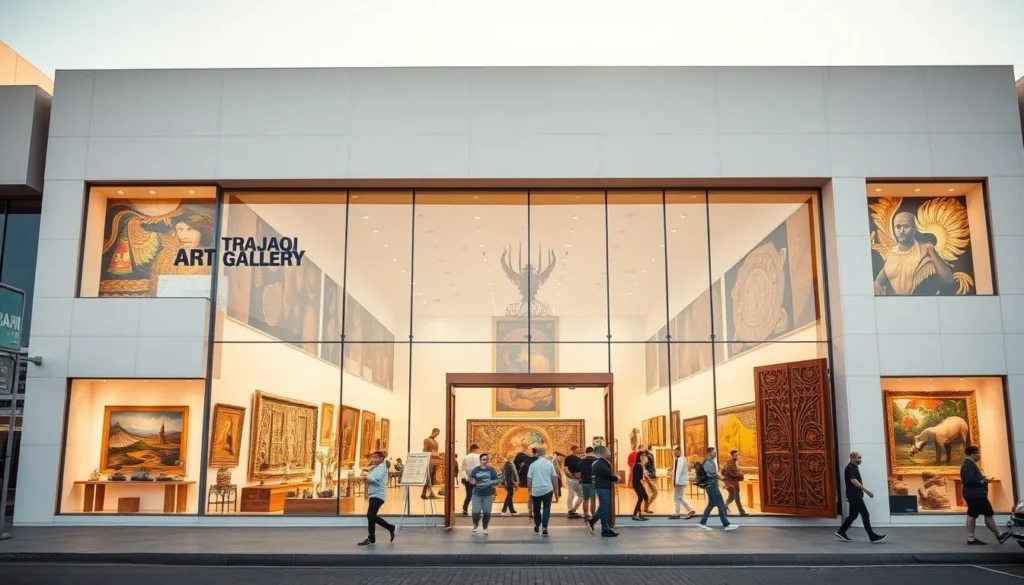
Many local artists draw inspiration from traditional motifs and techniques while incorporating modern perspectives, creating work that bridges Iraq’s rich artistic heritage with contemporary global influences. By supporting these artists, you’re contributing to the development of Amara’s cultural economy.
- Gallery visits can be enhanced by meeting the artists themselves, as many maintain studios nearby.
- Special exhibitions and cultural events are frequently organized, particularly during the cooler months.
- Purchasing original works or prints provides a meaningful souvenir and supports local talent.
As you explore Amara, you’ll find that the city’s cultural landscape is a vibrant reflection of its history and people, making it a compelling place to visit.
Shopping at Amara’s Traditional Markets
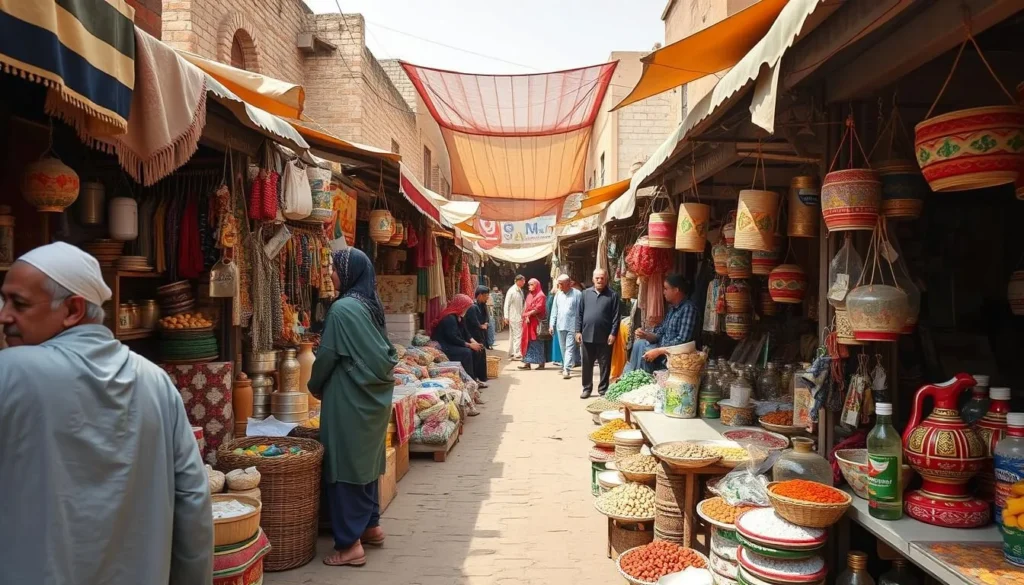
As you wander through Amara, you’ll discover the vibrant traditional markets that showcase the city’s rich cultural heritage. The Central Bazaar of Amara, located in the heart of the old city, is a labyrinth of narrow covered streets where you’ll find everything from spices and textiles to household goods and traditional crafts.
Handicrafts and Souvenirs to Bring Home
The market is a treasure trove of local handicrafts and souvenirs. You can find beautifully crafted items such as traditional Iraqi pottery, intricately woven textiles, and handmade jewelry, making for unique souvenirs.
Many shopkeepers take pride in explaining the origin and significance of their products, adding a personal touch to your shopping experience.
Navigating the Bustling Bazaars
Visiting the market in the early morning (between 8-10 am) offers the most pleasant shopping experience, as the markets are less crowded and temperatures are cooler. The market is organized into different sections dedicated to specific goods, including a vibrant food section showcasing local agricultural products.
When navigating the bazaar, don’t hesitate to ask shopkeepers about their products. Bargaining is expected for most items except food, but approach it as a friendly conversation rather than aggressive haggling.
Savoring Authentic Iraqi Cuisine in Amara
Savoring Iraqi cuisine is a must-do when visiting Amara. You’ll have the opportunity to try a variety of traditional dishes in a range of settings, from casual eateries to more formal restaurants. Amara’s culinary scene is characterized by its rich flavors and hearty meals, making it a great place to experience Iraqi food.

Must-Try Local Dishes and Delicacies
Iraqi cuisine is known for its delicious and diverse dishes. When in Amara, be sure to try some of the local specialties. Masgouf, a grilled carp dish, is a favorite among locals and visitors alike. You can also sample quzi, a roasted lamb dish that’s slow-cooked to perfection. For a unique experience, try some of the dishes from the Mesopotamian Marshes, such as fish preparations and wild duck.
These dishes are not only flavorful but also provide a glimpse into the region’s culinary heritage. You can find these dishes at various restaurants throughout Amara, each offering its own take on traditional Iraqi cuisine.
Top Restaurant Recommendations
Amara is home to a variety of excellent restaurants, each offering a unique dining experience. For a comprehensive selection of traditional Iraqi dishes, head to Al-Maysan Restaurant near the city center. Their masgouf and quzi are highly recommended. If you’re looking for an authentic local experience, visit Al-Qadisiyah Kebab House, where you can enjoy simple yet delicious grilled meats and fresh-baked bread.
Other notable mentions include Marsh House Restaurant, which specializes in dishes from the Mesopotamian Marshes, and Al-Tigris Riverside Café, which offers stunning views of the river along with mezze platters and grilled items. For budget-friendly options, consider Beit Al-Chai Tea House, where you can enjoy home-style meals at reasonable prices.
As you explore Amara’s culinary scene, you’ll find that most restaurants don’t serve alcohol, but they compensate with excellent fresh juices, yogurt drinks, and sweet tea that accompanies every Iraqi meal. This allows you to fully immerse yourself in the local food culture and enjoy a satisfying meal in a welcoming atmosphere.
Day Trips from Amara
When visiting Amara, Iraq, you’ll find that the city serves as a perfect base for exploring the surrounding region’s rich history and culture. The area is home to numerous archaeological sites, vibrant cities, and breathtaking natural landscapes, making it an ideal location for day trips.
Visiting the Ancient City of Ur
A day trip to the ancient city of Ur is a must when in Amara. As one of the most famous archaeological sites in Iraq, Ur offers a glimpse into the country’s rich history. You can explore the ruins of this ancient Sumerian city, visit the Ziggurat of Ur, and imagine life in ancient Mesopotamia. The site is a significant cultural and historical landmark, and a visit here will enrich your understanding of the region’s heritage.
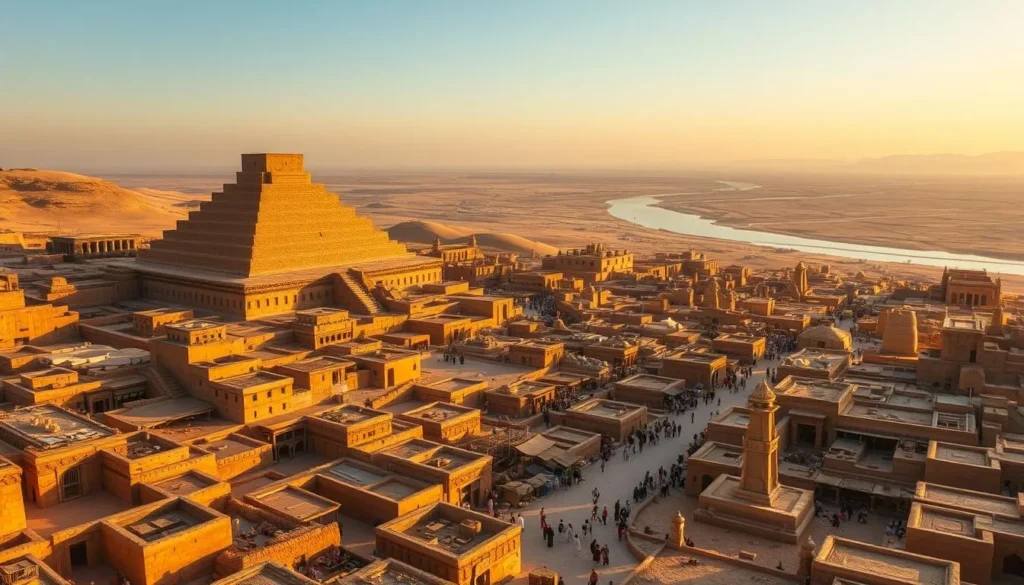
Exploring Basra: The Venice of the East
Another exciting day trip from Amara is to Basra, often referred to as “The Venice of the East.” Located about 200 kilometers south of Amara, Basra is Iraq’s second-largest city and boasts a unique blend of history and culture. You can take a scenic boat ride along the Shatt al-Arab river, visit the Basra Museum housed in one of Saddam Hussein’s former palaces, and explore the city’s historic Shanasheel houses with their distinctive wooden latticed balconies. The bustling Basra Bazaar offers a more cosmopolitan shopping experience than Amara’s markets, reflecting the city’s historical role as a commercial hub. Planning this day trip requires an early start, but the journey between Amara and Basra travels through interesting countryside and can be arranged with a private driver for approximately $100-150 round trip.
Practical Travel Information for Visiting Amara
To ensure a smooth and enjoyable trip to Amara, it’s crucial to be informed about the best ways to get there, where to stay, and when to visit. Here’s a breakdown of the essential travel information you need.
Getting to Amara and Transportation Options
Reaching Amara can be achieved through various transportation methods. The closest major city is Basra, from which you can take a domestic flight or drive to Amara. Once you arrive, local transportation options include taxis and rental cars, which are readily available.
- Taxis are a convenient way to get around the city and can be hired for day trips.
- Rental cars offer flexibility, especially if you plan to explore surrounding areas.
Accommodation Choices from Budget to Luxury
Amara offers a range of accommodations to suit different budgets and preferences. You can choose from budget-friendly guesthouses, mid-range hotels, to luxury resorts.
- Budget options are available for travelers looking to save on expenses.
- Luxury resorts offer a more comfortable stay with additional amenities.
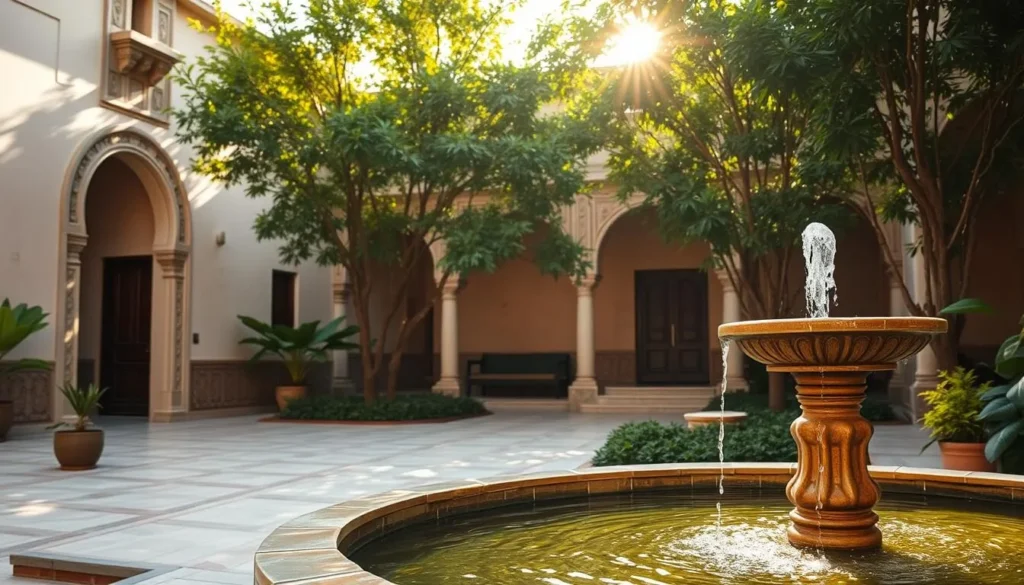
Best Time to Visit and Seasonal Considerations
The time of your visit can significantly impact your experience in Amara. The ideal months to plan your trip are during the spring (March to May) and fall (September to November), when temperatures are pleasant.
- Spring is particularly rewarding for nature enthusiasts as the Mesopotamian Marshes are vibrant and photogenic.
- Travelers should be aware of Ramadan and local festivals, which can affect business hours and accommodation availability.
- Summer brings extreme heat, making early morning or evening the best day times for sightseeing.
By considering these factors, travelers can plan a more enjoyable and stress-free trip to Amara.
Safety Tips and Cultural Etiquette
As you prepare for your journey to Amara, Iraq, understanding the local culture and safety guidelines is crucial for a respectful and enjoyable trip. When visiting this conservative region, being mindful of your behavior and attire can significantly impact your experience.
Staying Safe in Amara
To ensure your safety in Amara, it’s essential to be aware of your surroundings and respect local customs. Travelers should avoid traveling alone at night and stay informed about local conditions. Keeping a low profile and being cautious when interacting with strangers can also help in having a smooth trip.
Respecting Local Customs and Traditions
Respecting the local culture is vital when visiting Amara. Here are some key guidelines to follow:
- Dress conservatively: Men should wear long pants and shirts with sleeves, while women should cover their shoulders, knees, and chest, and consider wearing a headscarf when visiting religious sites.
- Avoid public displays of affection, as they may be considered disrespectful.
- Always ask permission before photographing local people, especially women and children.
| Cultural Practice | Description | Tip for Travelers |
|---|---|---|
| Dress Code | Conservative dressing | Cover shoulders, knees, and chest |
| Photography | Avoid photographing people without permission | Ask before taking pictures of locals |
| Ramadan | Respect fasting locals | Avoid eating, drinking, or smoking in public during daylight |
By being mindful of these cultural practices and safety tips, travelers can have a more enjoyable and respectful visit to this beautiful place. Learning a few basic Arabic phrases can also go a long way in showing respect for the local culture.
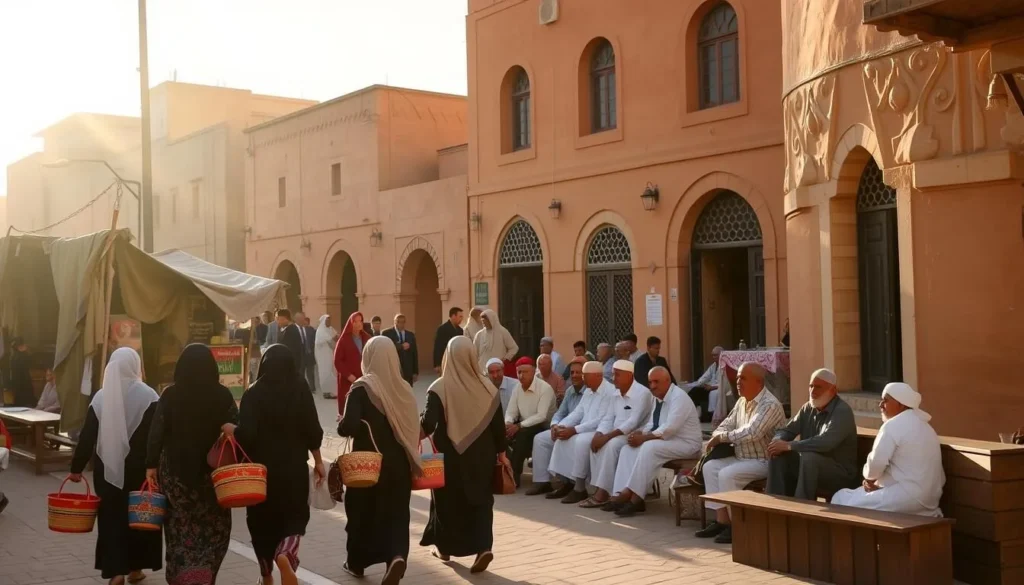
Planning Your Itinerary: How Many Days to Spend in Amara
When planning your trip to Amara, Iraq, it’s essential to consider the time you have available to make the most of your experience. With various attractions and activities to enjoy, you can tailor your itinerary to fit your interests and schedule.
One-Day Highlights Tour
If you’re limited to just one day, focus on the city’s main attractions. Visit the local markets to immerse yourself in the local culture and perhaps pick up some unique souvenirs. The Shatt al-Arab waterfront is another must-visit, offering scenic views and a glimpse into the local fishing industry.
Three-Day Comprehensive Experience
For a more immersive experience, consider spending three days in Amara. This allows you to explore the city’s historical sites, visit the Mesopotamian Marshes, and take a day trip to either Basra or Ur, gaining a deeper understanding of the region’s history and culture.
Conclusion: Why Amara Deserves a Spot on Your Iraq Itinerary
As you plan your trip to Iraq, considering Amara as a destination can significantly enhance your travel experience. This city, with its rich history and unique cultural heritage, offers a distinct perspective on the country, moving beyond the typical tourist trails.
Amara’s proximity to the Mesopotamian Marshes and its blend of traditional and modern influences make it an attractive stop. The warmth of its residents and the authenticity of the local culture are sure to leave a lasting impression on any traveler. By including Amara in your itinerary, you not only experience the diversity of Iraq but also contribute to the local economy, supporting the community.
With its unique blend of history, culture, and natural beauty, Amara is a hidden gem waiting to be explored. As Iraq continues to open up to tourism, visiting Amara is an opportunity to be among the first to discover its charms. Whether you’re a history buff, a culture enthusiast, or an adventure seeker, Amara has something to offer, making it a must-visit destination for any traveler looking to experience the authentic essence of Iraq.
—
The above is subject to change.
Check back often to TRAVEL.COM for the latest travel tips and deals.
